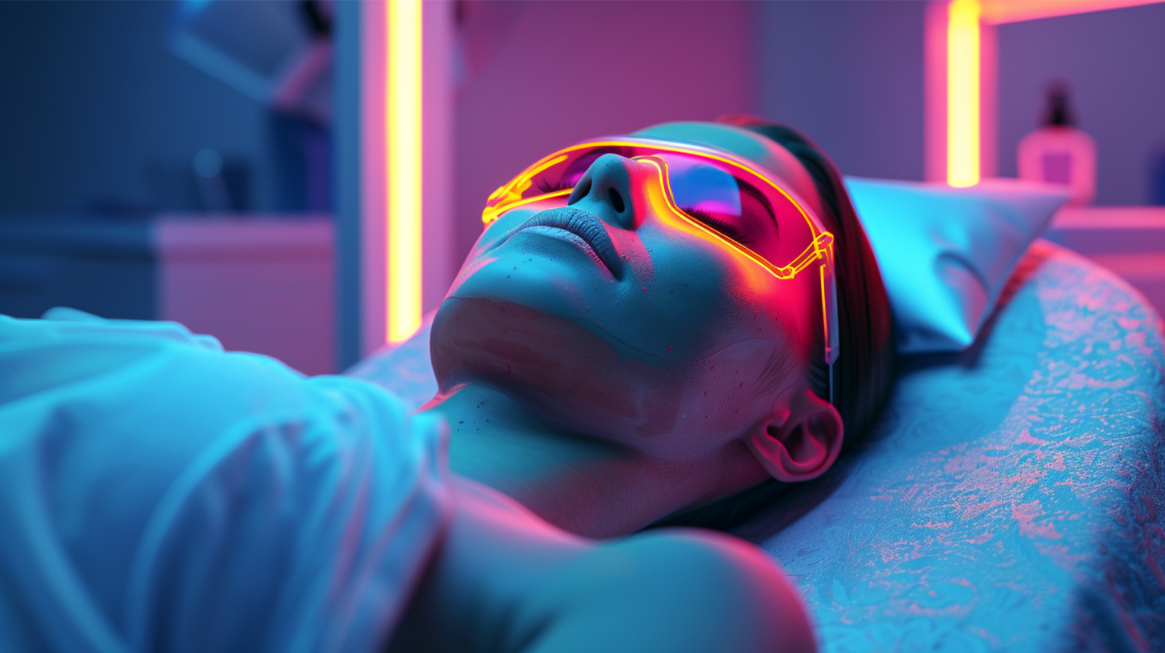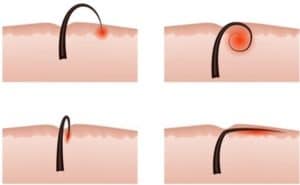Do you often wonder about the effectiveness of laser hair removal treatment for different hair types? Understanding how laser hair removal works and its efficacy across various hair types can help you make informed decisions about the best hair removal options.
Understanding Laser Hair Removal
Laser hair removal employs concentrated light beams to target and diminish hair follicles. The follicle absorbs the light, which damages the hair and inhibits future growth. While it sounds straightforward, several factors influence the success and effectiveness of this treatment.
How Laser Hair Removal Works
Laser hair removal targets the pigment (melanin) in hair follicles. Darker pigments absorb more light, making the treatment more effective for individuals with darker hair and lighter skin. The laser’s energy converts to heat, which damages the hair follicle, thus curtailing future hair growth.
The Science Behind Laser Hair Removal
Scientific advancements have allowed the development of lasers that can identify and differentiate between varying pigments. The critical parameters in laser hair removal are wavelength, pulse duration, and the energy level of the laser. These factors determine how well the treatment works on different hair types.
Get Your Free Consultation Today
Hair Types and Laser Hair Removal Effectiveness
Different hair types can be classified based on their color, texture, and thickness. Each of these characteristics affects how laser hair removal works and its success rate.
Hair Color
Dark Hair
Individuals with dark hair and light skin often see the best results from laser hair removal. The high concentration of melanin in dark hair provides more “targets” for the laser, making it easier to damage the hair follicles effectively.
Light Hair
Blonde, red, and gray hair contain less melanin than darker hair, which can be challenging for the laser to detect and target effectively. Newer laser technologies have improved outcomes for individuals with lighter hair, but results can still be less predictable compared to those with darker hair.
| Hair Color | Ease of Treatment | Expected Results |
|---|---|---|
| Dark Hair | High | Best results |
| Light Hair | Moderate to Low | Variable; less predictable |
| Gray Hair | Low | Often requires specialized lasers |
Hair Texture
Coarse Hair
Coarse or thick hair absorbs more laser energy, making it easier to treat effectively. These hair types often respond well to laser treatments, especially in areas like the bikini line or underarms.
Fine Hair
Fine or thin hair can be more challenging for laser hair removal. The lower density of melanin and smaller surface area can reduce the effectiveness of the treatment. However, advancements in laser technology are providing better outcomes for finer hair.
| Hair Texture | Ease of Treatment | Effectiveness |
|---|---|---|
| Coarse Hair | High | Generally very effective |
| Fine Hair | Moderate | Variable, often needs multiple sessions |
Laser Types and Their Suitability for Different Hair Types
Different laser systems have emerged to treat various hair and skin types more effectively. Understanding the types of lasers and their suitability for varying hair types can help you choose the most appropriate treatment.
Alexandrite Laser
The Alexandrite laser operates at a 755 nm wavelength and is highly effective for individuals with light to olive skin tones and dark hair. It is one of the fastest lasers available, making it suitable for treating large areas quickly.
Diode Laser
The Diode laser, operating at wavelengths between 800 and 810 nm, is versatile and effective for both fair and medium skin tones. It’s well-suited for thick, coarse hair, often showing significant results after just a few sessions.
Nd:YAG Laser
The Nd:YAG laser operates at a 1064 nm wavelength and is particularly effective for darker skin tones. Its longer wavelength allows it to bypass the skin’s surface and target the hair follicle directly, reducing the risk of skin damage and pigmentation changes.
| Laser Type | Wavelength | Suitability |
|---|---|---|
| Alexandrite | 755 nm | Light to olive skin, dark hair |
| Diode | 800-810 nm | Fair to medium skin tones, coarse hair |
| Nd:YAG | 1064 nm | Darker skin tones, versatile |
Factors Influencing Treatment Success
Numerous factors can influence the success of laser hair removal, beyond hair type and color. Being aware of these can help set realistic expectations and improve treatment outcomes.
Skin Type
Your skin type plays a crucial role in how effective laser hair removal can be. Lighter skin allows higher energy levels to be used, making the process more efficient. Darker skin requires a more cautious approach to prevent burns or pigmentation changes.
Treatment Area
Different areas of the body respond differently to laser treatment. Areas with thicker, coarser hair like the bikini line and underarms often show better results compared to areas with finer hair like the face or arms.
Hormonal Factors
Hormonal imbalances or changes, such as those experienced during pregnancy or menopause, can affect hair growth and consequently the effectiveness of laser hair removal.
Pre-Treatment Preparations
Adequate preparation can enhance the effectiveness of laser hair removal. Following these steps ensures the best possible experience and results.
Consultation and Patch Test
Prior to treatment, a consultation and patch test are crucial. They help determine the suitability of the laser for your hair and skin type and identify any potential adverse reactions.
Shave the Treatment Area
Shaving the area 24-48 hours before your appointment allows the laser to target the hair follicle more effectively without burning or damaging the surface hair.
Avoid Sun Exposure
Avoiding sun exposure for at least two weeks before treatment minimizes the risk of skin damage or pigmentation issues. Sun-exposed skin is more sensitive and can react unpredictably to laser treatments.
Post-Treatment Care
Post-treatment care is equally important to ensure the best results and avoid complications. Following the recommended guidelines can enhance the efficacy and longevity of your treatment.
Cooling and Soothing
Post-treatment, applying a cooling gel or aloe vera to the treated area can reduce redness and inflammation. This helps soothe your skin and speeds up the healing process.
Avoid Heat
Avoiding hot showers, saunas, and intense workouts for at least 24 hours post-treatment helps prevent irritation and inflammation. Heat can aggravate the treated area, leading to discomfort and potential complications.
Sun Protection
To protect your treated skin, applying a high-factor sunscreen and avoiding direct sun exposure is crucial. UV rays can cause pigmentation changes and sensitivity in the recently treated area.
Number of Sessions Required
Laser hair removal is rarely a one-time treatment. The number of sessions required varies depending on hair type, treatment area, and individual response.
Typical Treatment Plan
A typical laser hair removal plan involves multiple sessions spaced 4 to 6 weeks apart. Areas with denser hair may need additional sessions to achieve desired results.
Hair Growth Cycles
Hair grows in cycles, and laser hair removal is most effective during the growth phase (anagen phase). Multiple treatments are necessary to target hair in different phases and ensure comprehensive results.
| Hair Type | Number of Sessions | Time Interval |
|---|---|---|
| Dark, Coarse Hair | 6-8 sessions | 4-6 weeks apart |
| Light Hair | 8-10 sessions | 4-6 weeks apart |
| Facial Hair | 10+ sessions | 2-4 weeks apart |
Potential Risks and Side Effects
Understanding potential side effects helps in taking necessary precautions and ensuring safety during and after laser hair removal treatments.
Common Side Effects
Common side effects include redness, swelling, and temporary discomfort in the treated area. These are typically mild and resolve within a few hours to a couple of days.
Rare but Serious Side Effects
Rare issues can occur, such as burns, pigment changes, or scarring. Ensuring the treatment is done by a certified and experienced professional minimizes these risks.
Conclusion
Laser hair removal offers a promising and lasting solution for unwanted hair across varied hair types. While darker, coarser hair generally sees the best results, advancements in laser technologies are improving outcomes for finer and lighter hair types as well. Proper preparation, adhering to pre and post-treatment guidelines, and selecting the appropriate laser type are critical to achieving the best possible results. By understanding the nuances of laser hair removal, you can make informed decisions and embark on a more effective and satisfying hair removal journey.



